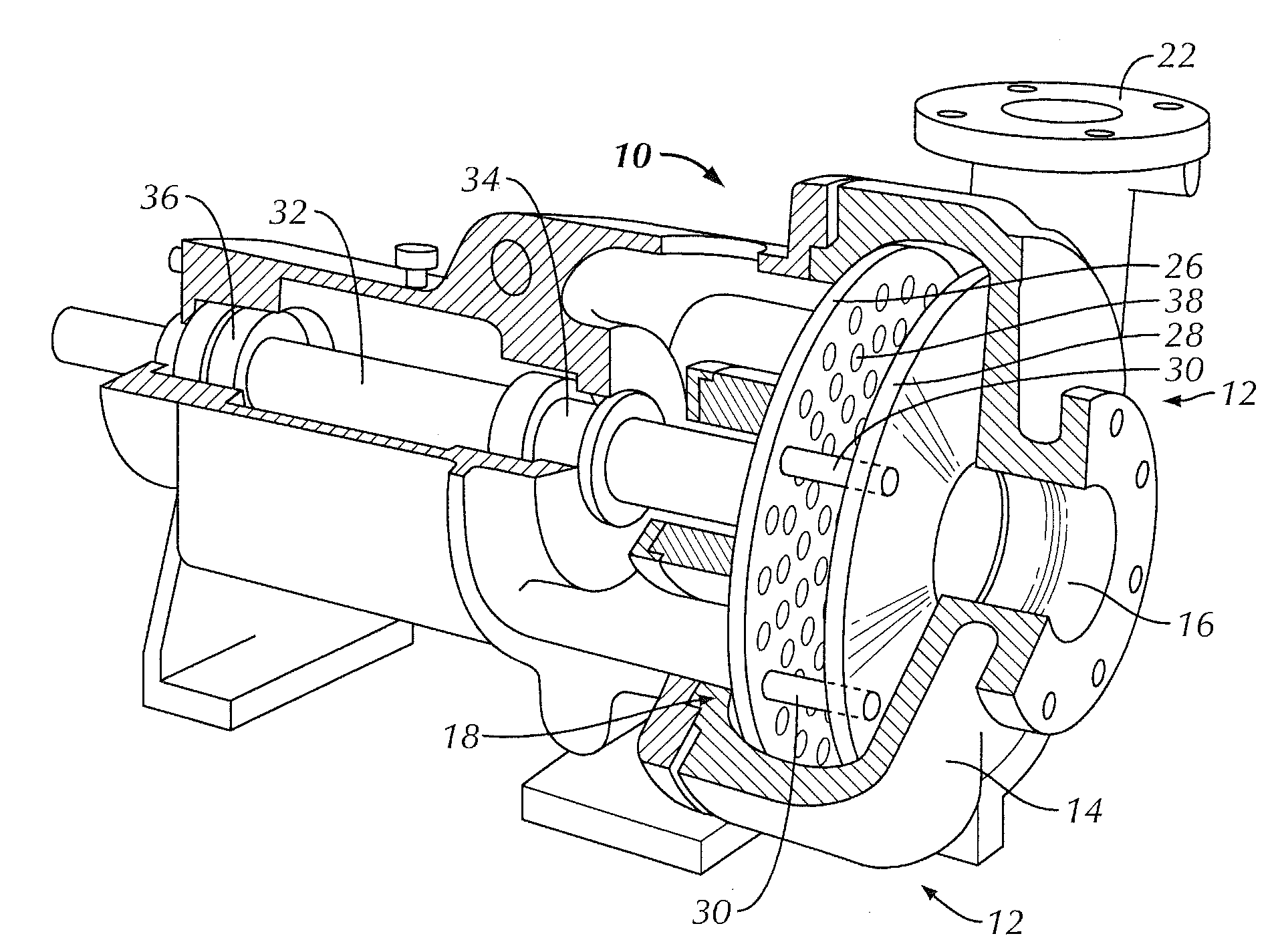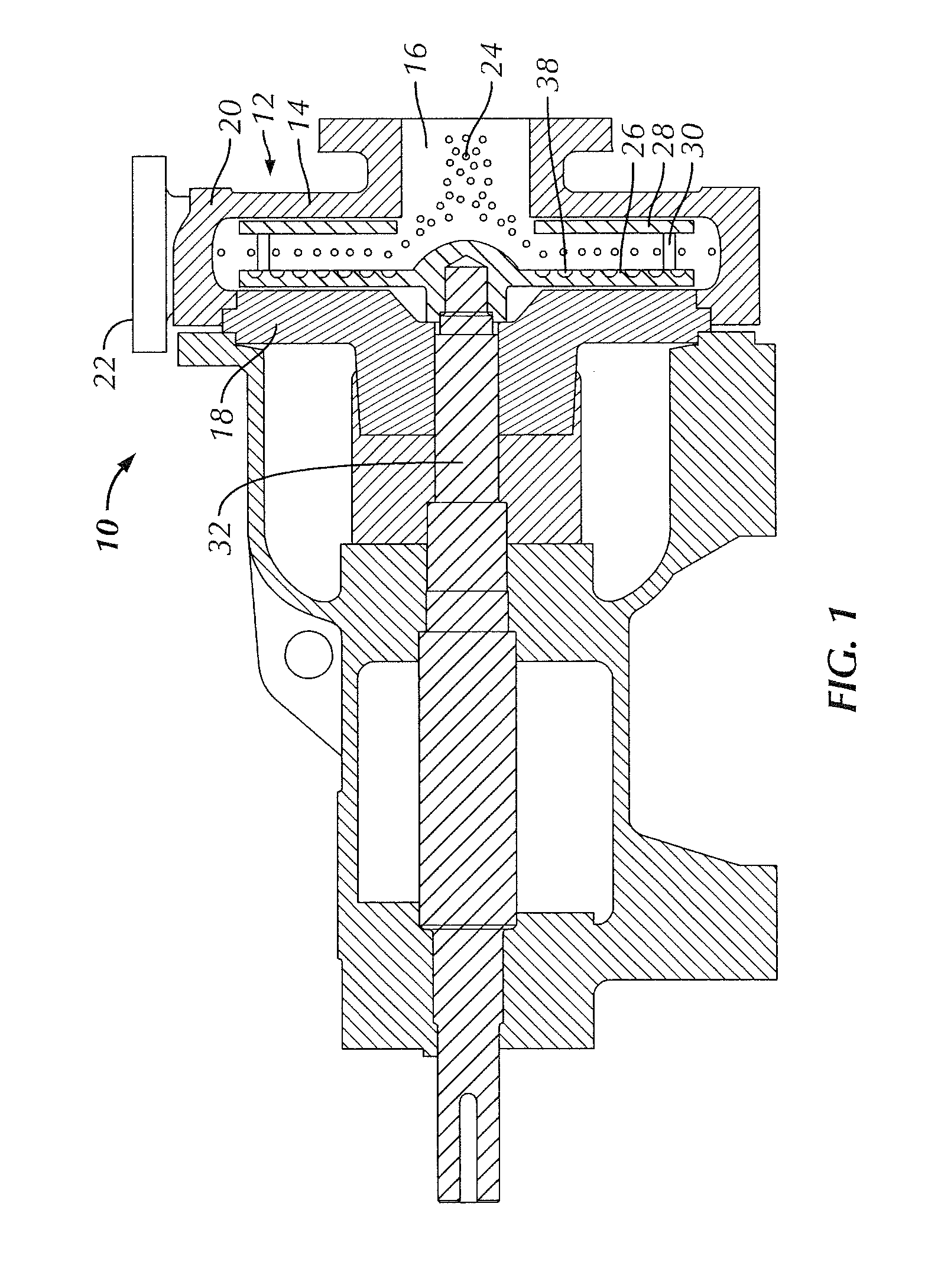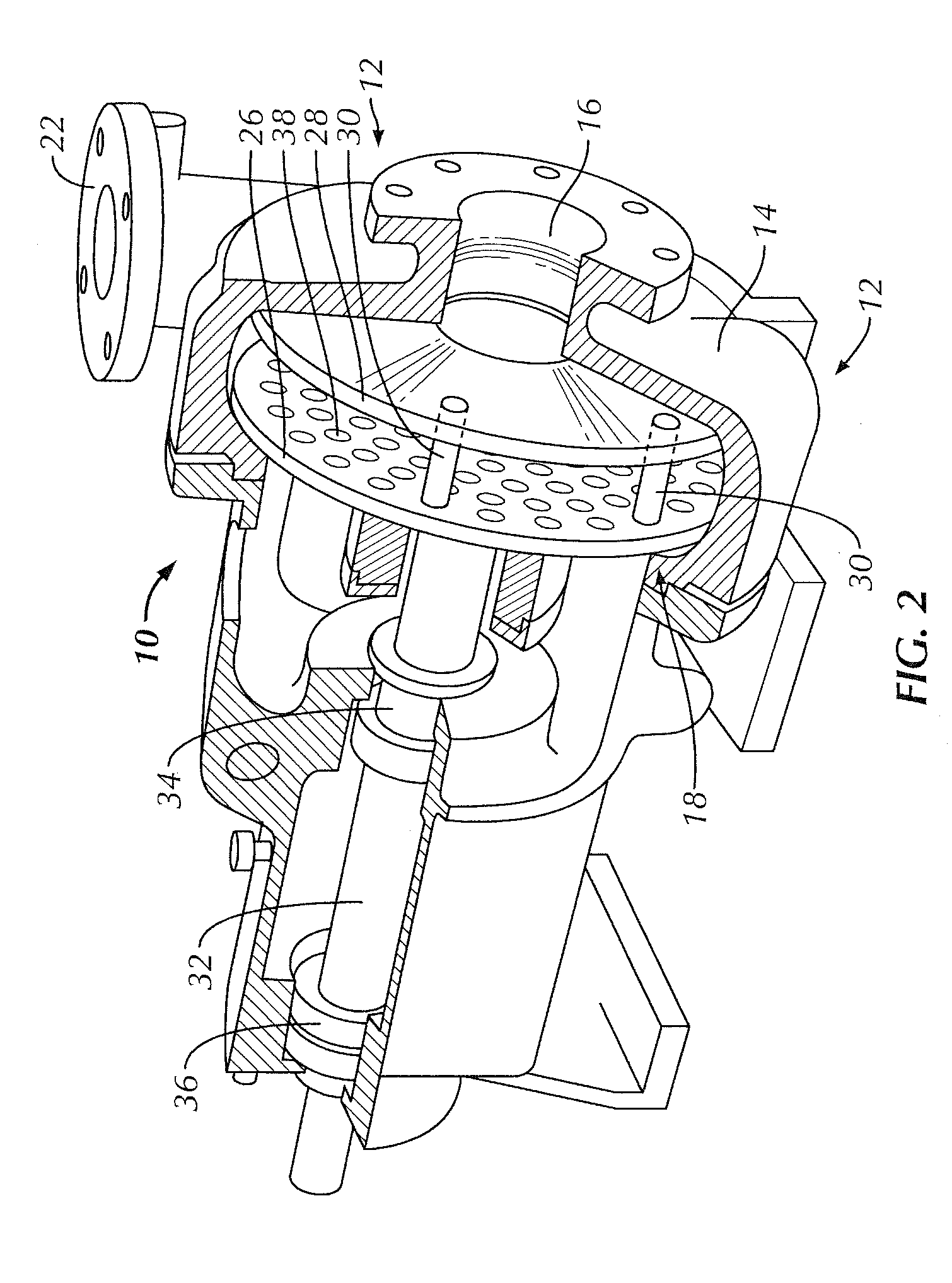Disc pump
a disc pump and pump body technology, applied in the field of pumps, can solve the problems of affecting the performance of the pump, the the failure of the pump, etc., and achieve the effect of improving the pump performance, reducing the long-wear and high-reliability attributes
- Summary
- Abstract
- Description
- Claims
- Application Information
AI Technical Summary
Benefits of technology
Problems solved by technology
Method used
Image
Examples
Embodiment Construction
[0029]A cross section of a typical boundary layer or disc pump 10 is shown in FIG. 1. The portion of interest for this description is seen on the right end of the drawing. A pump housing 12 is formed by a front wall 14, a back wall 18, and a peripheral wall 20. These three walls may be distinct pieces or two or more of the walls may be a single part. The three walls are defined in this way based on the physical configuration of the pump housing. This definitional choice is not meant to limit the type of housing in any way. It is for convenience only.
[0030]The pump 10 has a inlet 16 located near the center of the front wall 14. The inlet 16 is aligned with the longitudinal axis of the pump drive shaft 32. The inlet 16, therefore, can be described as a central, coaxial inlet. The inlet 16 can take various forms. It can supply feed flow from one side of the housing 12 or from both sides of the housing. A design showing dual inlet flow from both sides of the housing is disclosed in U.S....
PUM
 Login to View More
Login to View More Abstract
Description
Claims
Application Information
 Login to View More
Login to View More - R&D
- Intellectual Property
- Life Sciences
- Materials
- Tech Scout
- Unparalleled Data Quality
- Higher Quality Content
- 60% Fewer Hallucinations
Browse by: Latest US Patents, China's latest patents, Technical Efficacy Thesaurus, Application Domain, Technology Topic, Popular Technical Reports.
© 2025 PatSnap. All rights reserved.Legal|Privacy policy|Modern Slavery Act Transparency Statement|Sitemap|About US| Contact US: help@patsnap.com



